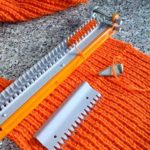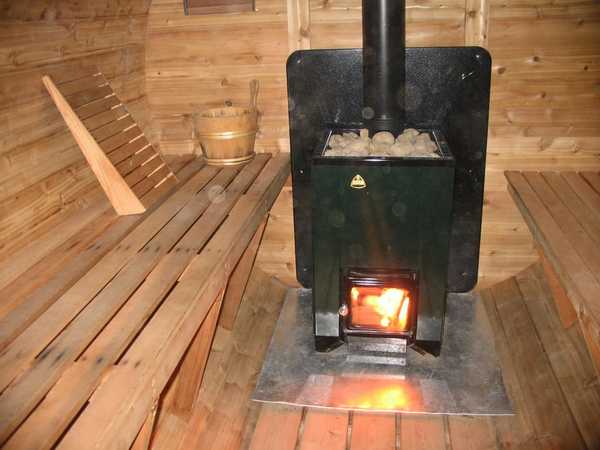Installing the combustion door of a brick oven
The combustion door in a brick oven is one of the most important elements that directly affects the durability and efficiency of the structure. With its help, fuel is supplied to the combustion chamber, the combustion process is regulated, and all this is done with great comfort. It would seem - what’s so complicated? In fact, unpleasant surprises are not uncommon - after several months, or even earlier, the door begins to hang, large targets appear around it and bricks crumble, which can lead to disastrous consequences. Let's consider how to secure the door of a brick furnace.
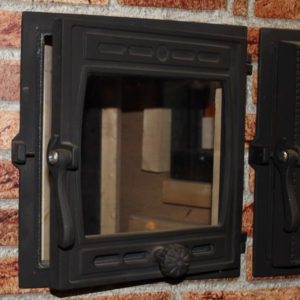
The content of the article
How to install the fire door?
There are several types of fire doors:
- Cast iron. They are not popular due to their heavy weight, difficulty in installation and fear of high temperatures.
- Made from stainless steel. They are most often found in sauna stoves, as they confidently tolerate contact with water.
- Glass. The most attractive option is its excellent performance characteristics, as well as the ability to observe the combustion process.
Installing the combustion door of a brick oven is a challenging task.It is necessary to understand that under the influence of high temperatures the metal expands, which can result in ruptures in the masonry if it is made too tightly. Therefore, when installing metal elements, a small gap should be left.
 Before proceeding with installation, you should inspect the door and its frame (as a rule, they are included in the kit) for damage, distortion, and opening should be easy. If the stove is coal, then you need to drill a 13 mm hole in the product to remove gases. Since the door is exposed to the greatest mechanical and temperature effects, each fastening option must be performed in strict accordance with the technology and installation rules.
Before proceeding with installation, you should inspect the door and its frame (as a rule, they are included in the kit) for damage, distortion, and opening should be easy. If the stove is coal, then you need to drill a 13 mm hole in the product to remove gases. Since the door is exposed to the greatest mechanical and temperature effects, each fastening option must be performed in strict accordance with the technology and installation rules.
Wire mount
In this case, it is recommended to use nichrome wire, since it is characterized by heat resistance, high ductility and durability. Before installation, it must be attached to the door frame, which, as a rule, has special holes (if not, then you need to pre-drill them). The diameter of the wire is selected depending on the thickness of the seam in the masonry and should be 2–3 times smaller. For stability and reliability of installation, the wire is walled up on at least 2 bricks, keeping it taut, which makes the whole process very labor-intensive.
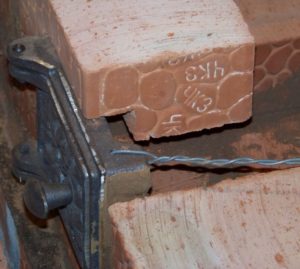
Installation using stainless steel sheets
The modern and most common method due to its simplicity and high reliability of the result. The structure is made from a corner and has the same geometric dimensions as the door, with one side placed between the bricks, and the other directly into the masonry, after which it is covered with mortar.Process Features:
- Protection of seams and masonry from high temperatures is provided by silicon thermal insulation. In addition, it compensates for the expansion of the metal when heated.
- The best stability is achieved with self-tapping screws that are screwed into the brick.
Experts recommend combining this method with wire fastening - this will achieve excellent reliability and durability.
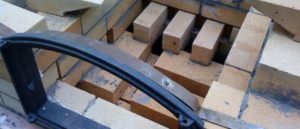
Reliable fixation with self-tapping screws or bolts
The method is the least popular and is not considered the most reliable, since the design of the door and frame is quite heavy, especially if they are made of cast iron. Before installation, holes are drilled in the brickwork with the frame, after which installation occurs with fixation with self-tapping screws or bolts.
IMPORTANT. Be sure to leave a small gap between the brick and the masonry, since with thermal expansion of the metal, the screws can become deformed and damage the entire structure.
Tips and tricks for a secure installation
Despite the fact that each of the methods is simple and does not require certain skills and abilities, some points are still worth paying attention to:
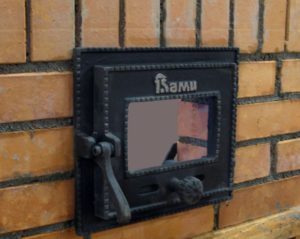 first of all, installation should be carried out with the door closed, but not locked - at a certain moment it will open itself in the desired position;
first of all, installation should be carried out with the door closed, but not locked - at a certain moment it will open itself in the desired position;- to ensure that the open lock does not lead to the opening of the firebox, you need to tilt the structure from above by 2–3 mm;
- if the height of the frame does not coincide with the masonry, then it is necessary to compensate for the difference with brick fragments or make grooves in the brick.
Regardless of the chosen method, the key to reliable fastening and long-term operation is careful and responsible performance of work, as well as the use of reliable materials. Remember that the stove is built to last for decades and saving in this case simply does not make sense.

